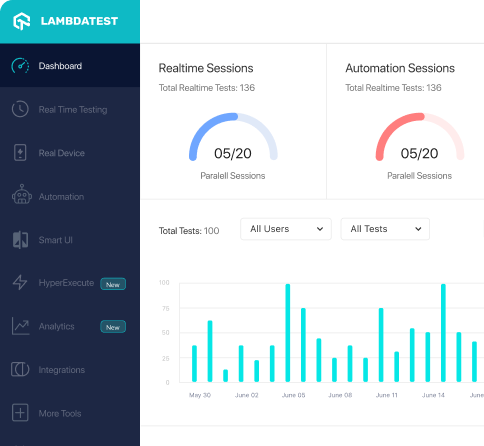How to use SoftAssertionsExtension_InjectionSanityChecking_Test class of org.assertj.core.api.junit.jupiter package
Best Assertj code snippet using org.assertj.core.api.junit.jupiter.SoftAssertionsExtension_InjectionSanityChecking_Test
...20import org.junit.jupiter.api.Test;21import org.junit.jupiter.api.extension.ExtendWith;22import org.junit.jupiter.api.extension.ExtensionConfigurationException;23@DisplayName("SoftAssertionsExtension injection sanity checking test")24class SoftAssertionsExtension_InjectionSanityChecking_Test {25 @ExtendWith(SoftAssertionsExtension.class)26 static abstract class TestBase {27 @Test28 void myTest() {}29 }30 class NoDefaultSoftAssertionsProvider extends AbstractSoftAssertions {31 public NoDefaultSoftAssertionsProvider(@SuppressWarnings("unused") String param) {}32 }33 @Disabled("Run by the testkit")34 static class NoDefaultConstructorTest extends TestBase {35 @InjectSoftAssertions36 NoDefaultSoftAssertionsProvider usp;37 }38 @Test...SoftAssertionsExtension_InjectionSanityChecking_Test
Using AI Code Generation
1import org.assertj.core.api.junit.jupiter.SoftAssertionsExtension;2import org.junit.jupiter.api.Test;3import org.junit.jupiter.api.extension.ExtendWith;4@ExtendWith(SoftAssertionsExtension.class)5class SoftAssertionsExtension_InjectionSanityChecking_Test {6 void testSoftAssertionsInjection(SoftAssertions softly) {7 softly.assertThat(true).isTrue();8 }9}10So far so good, the test passes. But if we uncomment the @ExtendWith(SoftAssertionsExtension.class) annotation on the class, the test fails:11import org.assertj.core.api.junit.jupiter.SoftAssertionsExtension;12import org.junit.jupiter.api.Test;13import org.junit.jupiter.api.extension.RegisterExtension;14class SoftAssertionsExtension_InjectionSanityChecking_Test {15 SoftAssertionsExtension softAssertions = new SoftAssertionsExtension();16 void testSoftAssertionsInjection(SoftAssertions softly) {17 softly.assertThat(true).isTrue();18 }19}Blogs
Check out the latest blogs from LambdaTest on this topic:
In today’s fast-paced world, the primary goal of every business is to release their application or websites to the end users as early as possible. As a result, businesses constantly search for ways to test, measure, and improve their products. With the increase in competition, faster time to market (TTM) has become vital for any business to survive in today’s market. However, one of the possible challenges many business teams face is the release cycle time, which usually gets extended for several reasons.
Unit and functional testing are the prime ways of verifying the JavaScript code quality. However, a host of tools are available that can also check code before or during its execution in order to test its quality and adherence to coding standards. With each tool having its unique features and advantages contributing to its testing capabilities, you can use the tool that best suits your need for performing JavaScript testing.
Sometimes, in our test code, we need to handle actions that apparently could not be done automatically. For example, some mouse actions such as context click, double click, drag and drop, mouse movements, and some special key down and key up actions. These specific actions could be crucial depending on the project context.
It’s strange to hear someone declare, “This can’t be tested.” In reply, I contend that everything can be tested. However, one must be pleased with the outcome of testing, which might include failure, financial loss, or personal injury. Could anything be tested when a claim is made with this understanding?
Automation Testing Tutorials
Learn to execute automation testing from scratch with LambdaTest Learning Hub. Right from setting up the prerequisites to run your first automation test, to following best practices and diving deeper into advanced test scenarios. LambdaTest Learning Hubs compile a list of step-by-step guides to help you be proficient with different test automation frameworks i.e. Selenium, Cypress, TestNG etc.
LambdaTest Learning Hubs:
- JUnit Tutorial
- TestNG Tutorial
- Webdriver Tutorial
- WebDriverIO Tutorial
- Protractor Tutorial
- Selenium 4 Tutorial
- Jenkins Tutorial
- NUnit Tutorial
- Jest Tutorial
- Playwright Tutorial
- Cypress Tutorial
- PyTest Tutorial
YouTube
You could also refer to video tutorials over LambdaTest YouTube channel to get step by step demonstration from industry experts.
Most used methods in SoftAssertionsExtension_InjectionSanityChecking_Test
Try LambdaTest Now !!
Get 100 minutes of automation test minutes FREE!!




